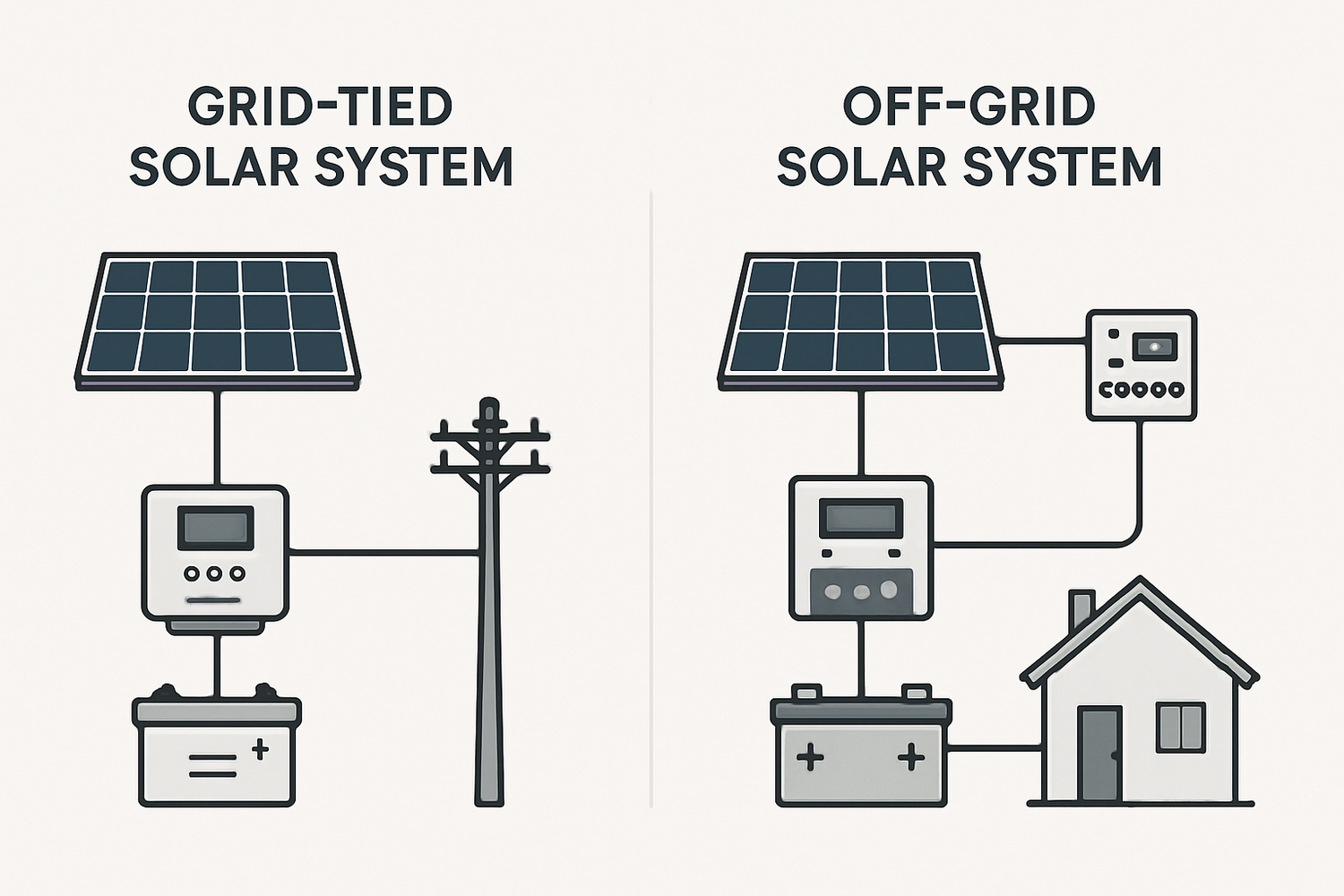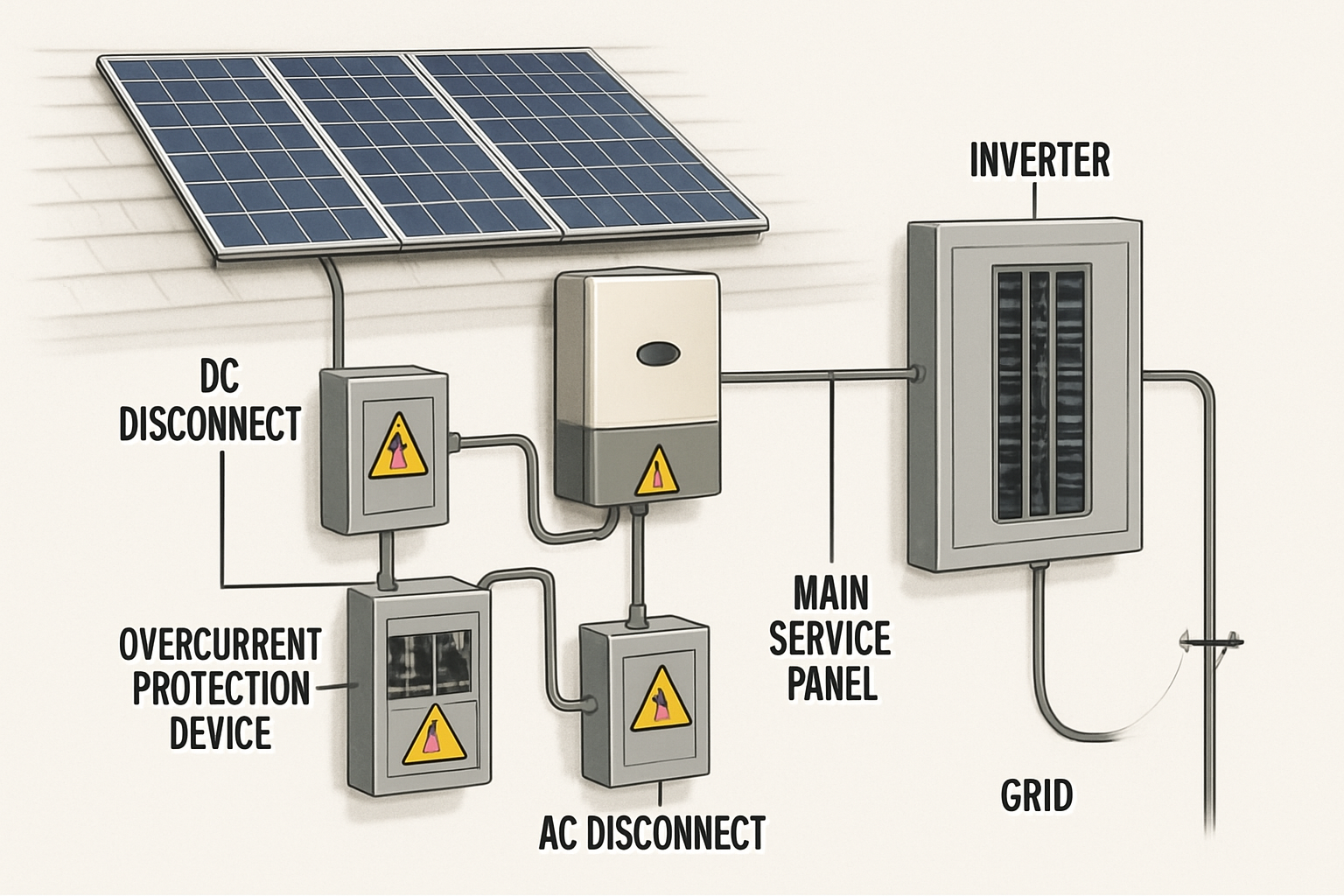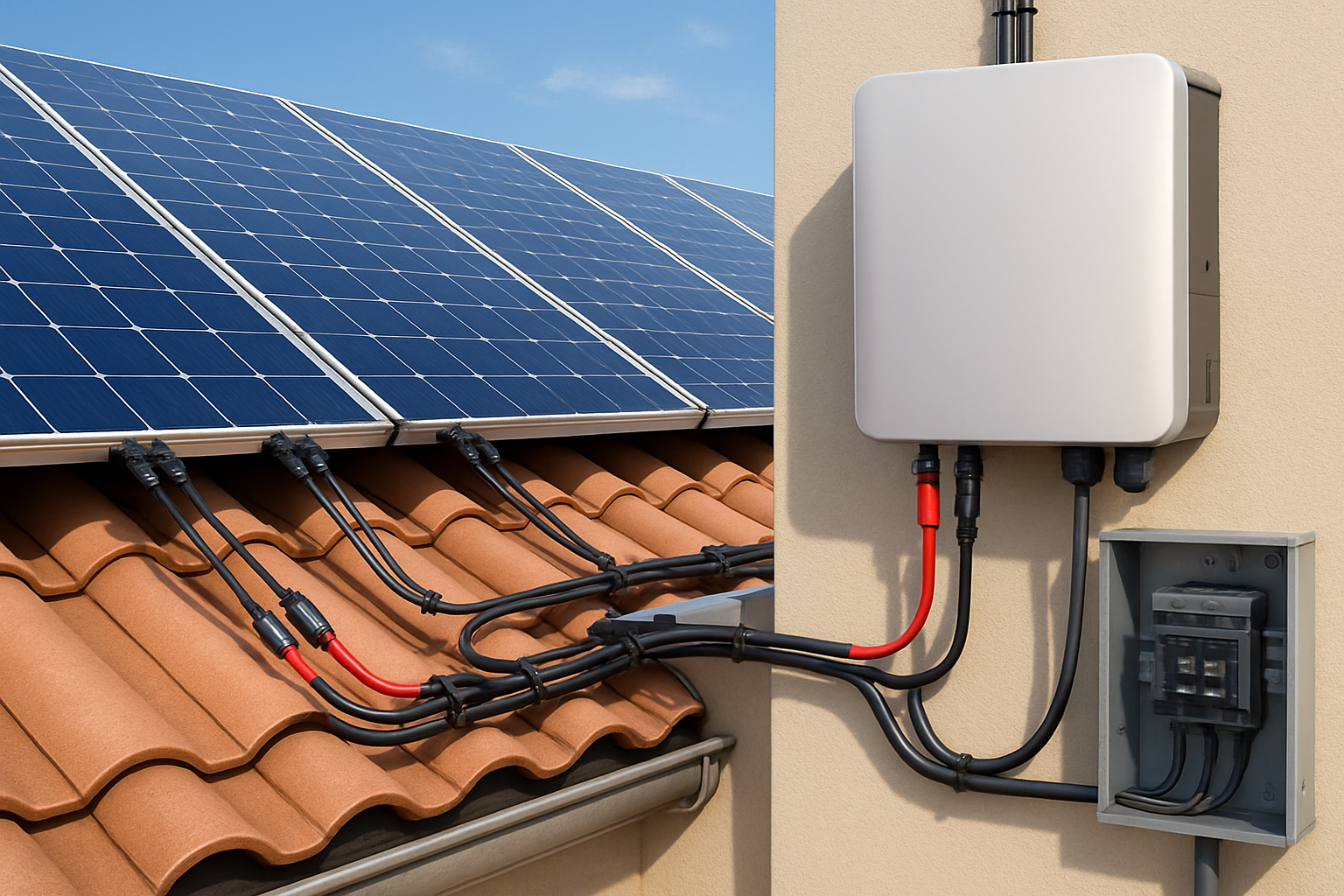Do Solar Panels Work Without Batteries? A Practical, Engineer-Led Guide
Prospective solar owners often ask: Do I need batteries for solar to work? The honest answer is: it depends on how your system is designed. In this guide I combine real-world field notes with engineering basics so you can decide when storage is optional, and when it is indispensable.
How PV Actually Works
From Sunlight to Usable Power
Photovoltaic (PV) modules convert sunlight into direct current (DC) via the photovoltaic effect. When photons hit the semiconductor junction, electrons move and create DC power—this is the raw output of your array. See the high-level background in the IEA’s Solar Energy Perspectives.
Why Inverters Matter
Homes and grids run on alternating current (AC). An inverter converts panel DC into AC and synchronizes it with grid voltage and frequency. Common formats include string inverters, microinverters, and hybrid inverters. Modern grid-interactive inverters implement anti-islanding protection: they shut down automatically if the grid goes out, preventing backfeed into lines where crews may be working.
Grid-Tied Systems: Yes, Panels Work Without On-Site Batteries
Daily Operation
In a grid-tied setup, your PV feeds household loads first; any surplus exports to the utility. When solar is insufficient—or at night—you import from the grid. In many regions, net metering or export credits offset imports, effectively using the grid as a “virtual battery.” See the DOE overview of U.S. solar and grid modernization at energy.gov/topics/solar-energy.
What Happens in an Outage?
Most standard grid-tied systems do not power the home during a utility outage because of anti-islanding requirements. Some hybrid inverters include a protected backup circuit or “critical loads” panel that can run when the grid is down—but only if you pair them with batteries or a special daytime-backup mode.
Off-Grid Systems: Batteries Are Mandatory
Why Storage Is Required
Off-grid homes have no utility connection. Without storage, you would only have power in full sun. Batteries capture daytime surplus and supply the home at night or during cloudy spells. Lithium iron phosphate (LiFePO4) remains popular for its cycle life and stable chemistry.
Core Components
- PV array sized to daily energy needs and winter irradiance.
- Charge controller to manage PV-to-battery charging safely.
- Battery bank sized for autonomy (target 1–3 days for most cabins).
- Off-grid inverter to supply stable AC power to appliances.
Hybrid Systems: Grid Benefits + Resilience
Hybrid systems connect to the grid and include batteries. You can time-shift solar to evenings, ride through outages, and sometimes arbitrage time-of-use rates. Many hybrids provide a dedicated backup sub-panel to keep essentials (fridge, lighting, internet, outlets for medical devices) running.
My Field Notes: A Quick Reality Check
- Sunny-day backup isn’t guaranteed. I’ve tested multiple hybrid inverters: unless a model explicitly supports “PV-only backup,” you’ll need batteries for outage power.
- Right-sizing beats oversizing. In real homes, a 5–7 kW PV with a 10–15 kWh battery often covers evening peaks and short outages; more may be needed for electric cooking/HVAC.
- Critical loads panel is worth it. Separating essentials reduces required battery capacity and keeps backup runtimes predictable.
How Long Will a Battery Last in an Outage? (Back-of-Envelope)
Runtime (hours) ≈ Usable battery (kWh) ÷ Average load (kW)
Example I’ve validated during a storm drill: a 10 kWh battery with 90% usable capacity runs a 0.8 kW essential circuit for roughly 9 ÷ 0.8 ≈ 11.25 hours. PV during daylight can extend this, but expect clouds during severe weather and plan conservatively.
Choosing the Right Architecture
Quick Decision Guide
- Go Grid-Tied (no batteries) if the grid is reliable, incentives favor exports, and outage risk is minimal.
- Go Hybrid if you want outage backup, time-of-use savings, or to increase self-consumption.
- Go Off-Grid only if service is unavailable/too costly, and you accept the design/maintenance discipline.
Key Questions I Ask Clients
- Outage profile: How often and how long? Any critical medical or work loads?
- Load shape: Day vs. evening consumption; heat pumps/EVs in the mix?
- Budget & incentives: Batteries add cost but boost resilience; check local credits.
- Space & wiring: Room for batteries, clearances, and a critical-loads sub-panel?
Common Myths—Corrected
- “Panels keep my house on during outages.” Not unless your system includes a compliant backup mode; anti-islanding disables standard grid-tie inverters when the grid fails.
- “More panels replace the need for batteries.” Extra PV helps daytime loads but does not provide nighttime energy or ride-through without storage.
- “All batteries last 15 years.” Cycle life depends on chemistry, depth of discharge, temperature, and firmware limits; many LiFePO4 packs reach 10–15 years if well managed.
Do Panels Work Without Batteries? The Bottom Line
Yes—in grid-tied systems, solar works daily without on-site batteries. No—for off-grid homes or for seamless outage backup, storage becomes essential. Hybrid systems bridge both worlds, trading higher upfront cost for resilience and flexibility.
Frequently Asked Questions
Do grid-tied systems provide power during a utility outage?
Typically no. Anti-islanding protection shuts down standard inverters when the grid fails. Some hybrid inverters can power a protected circuit during outages, usually when paired with batteries.
What are the advantages of adding batteries to a grid-tied system?
Backup power, higher self-consumption, potential time-of-use savings, and voltage/frequency ride-through for sensitive electronics—plus the option to run critical loads during outages.
How long do solar batteries last?
Many LiFePO4 systems deliver thousands of cycles (often 10–15 years) if kept within recommended temperature and depth-of-discharge limits. Firmware settings that cap maximum charge also extend life.
Can I start grid-tied and add batteries later?
Yes. Choose a battery-ready hybrid inverter or ensure compatibility with an AC-coupled battery later. Confirm space, clearances, and the plan for a critical-loads sub-panel.
References & Further Reading
- International Energy Agency — Solar Energy Perspectives
- U.S. Department of Energy — Solar Energy (topic hub)
- National Renewable Energy Laboratory (NREL) — Solar Research Portal
- IEEE 1547 — Interconnection and Interoperability of Distributed Energy Resources
- UL 1741 — Inverters, Converters, Controllers for Use in Independent Power Systems





Leave a comment
All comments are moderated before being published.
This site is protected by hCaptcha and the hCaptcha Privacy Policy and Terms of Service apply.